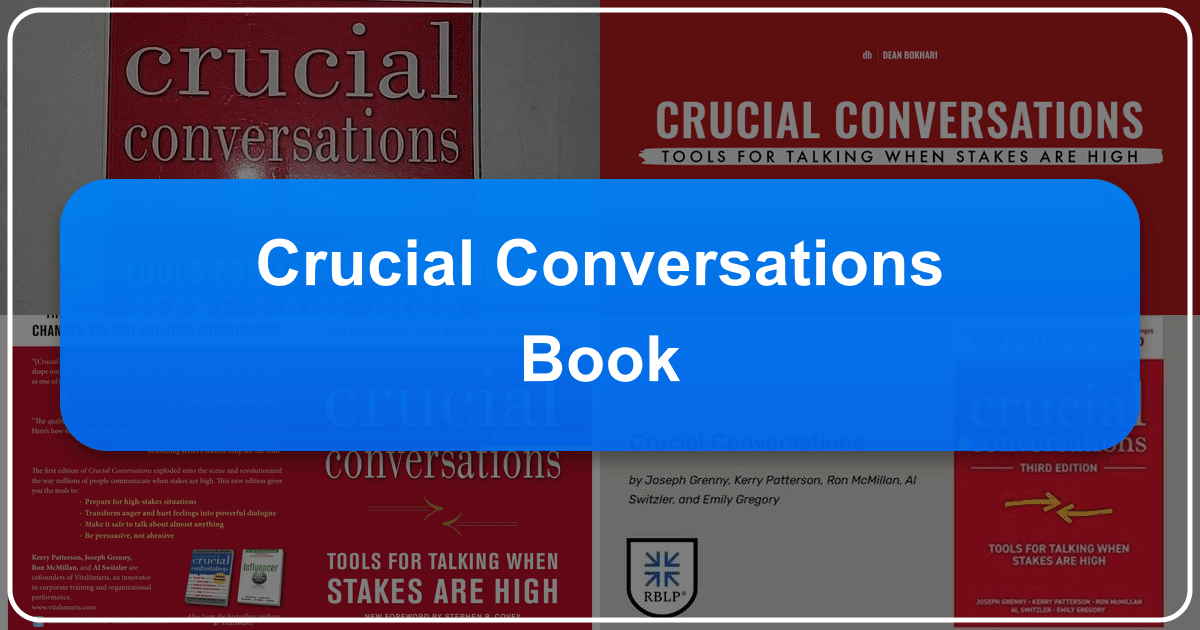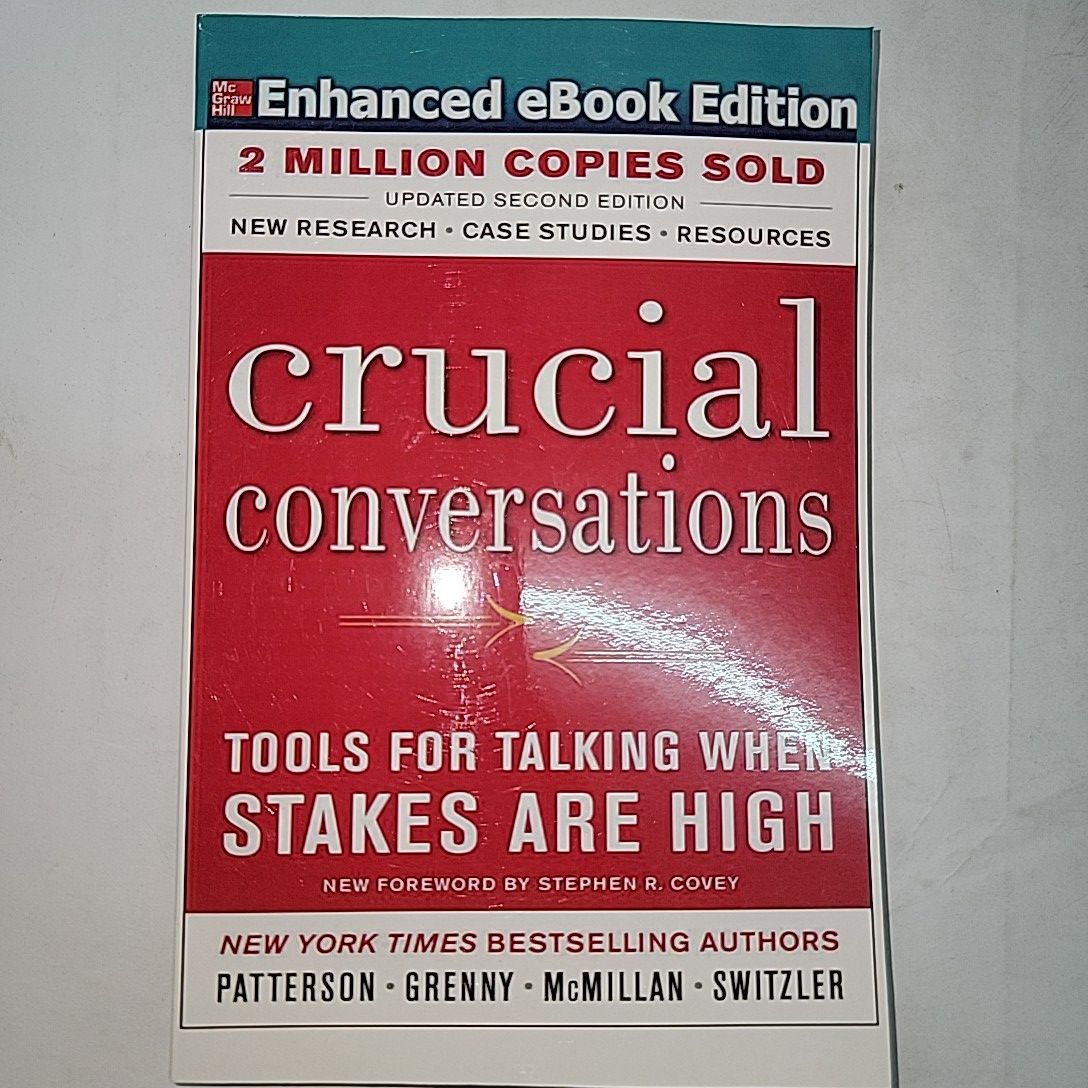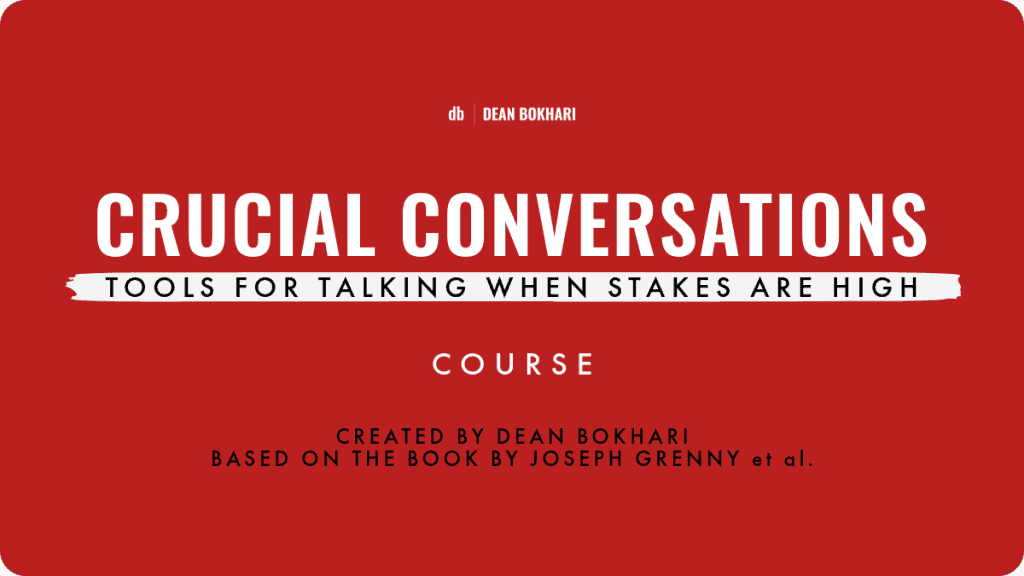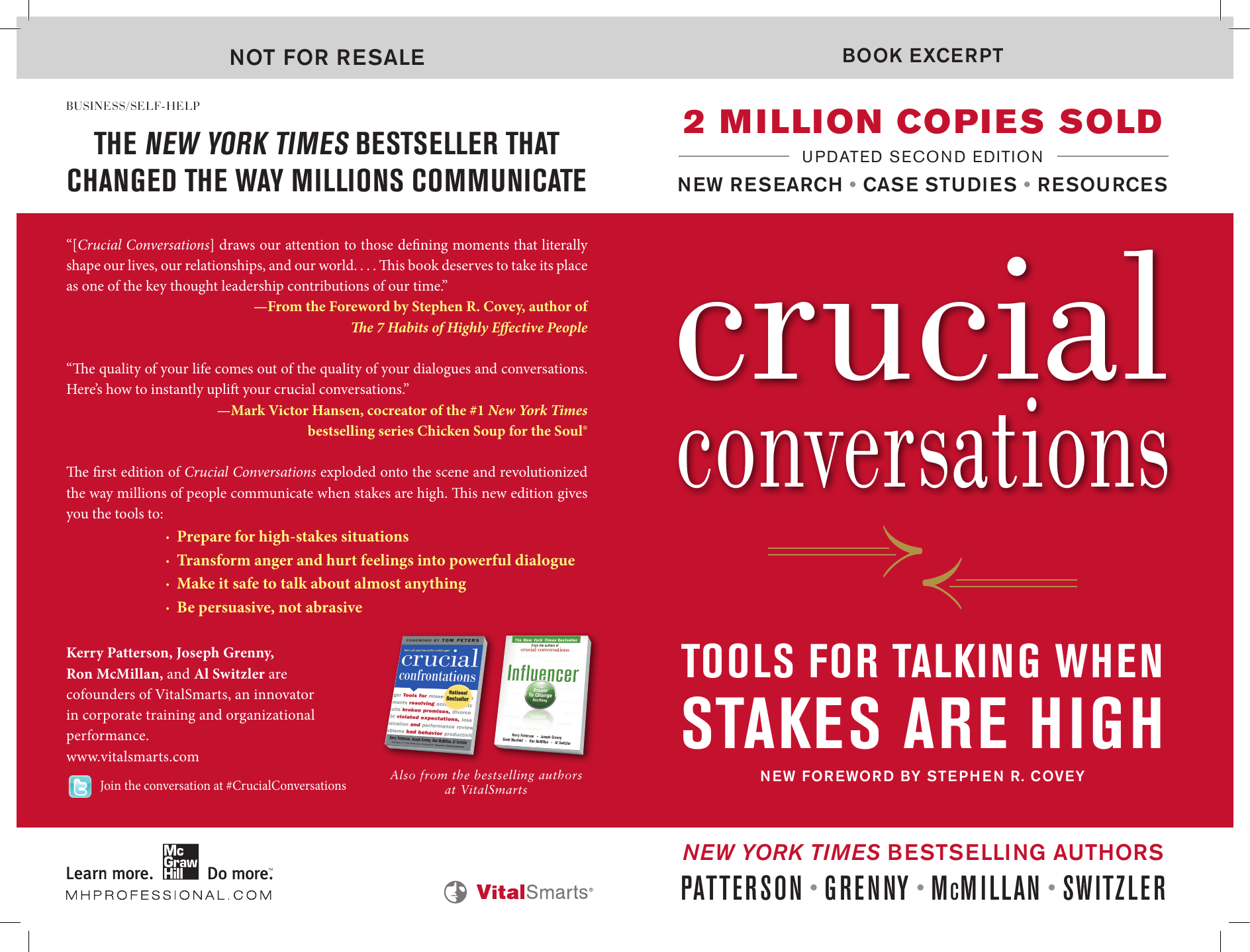Crucial Conversations: A Deep Dive into the Book and its Impact

The book “Crucial Conversations: Tools for Talking When Stakes Are High” by Kerry Patterson, Joseph Grenny, Ron McMillan, and Al Switzler, has become a cornerstone in the field of communication, offering practical strategies for navigating challenging conversations. This article will explore the book’s core principles, examining its content, author background, educational value, and broader cultural impact within the context of the book’s overall influence.
Understanding Crucial Conversations
Crucial Conversations tackles the pervasive problem of ineffective communication in high-stakes situations. The authors define a crucial conversation as an interaction where opinions vary, stakes are high, and emotions run strong. These conversations, far from being rare occurrences confined to boardrooms, are commonplace in daily life, affecting personal and professional relationships alike. The book highlights the common tendency to either avoid these conversations entirely or to handle them poorly, leading to negative consequences and damaged relationships.

The core of the book revolves around the idea that these difficult conversations are often avoided due to fear of negative repercussions. Individuals might choose to communicate through indirect means like emails or voicemails instead of engaging in direct, face-to-face dialogue. This avoidance, however, often exacerbates the underlying issue and prevents productive resolution.
The authors argue that the physiological response to high-stakes situations—the release of adrenaline—impairs rational thought processes. This physiological response often leads to impulsive and regrettable actions and statements, further complicating already delicate discussions. The book’s strength lies in providing readers with a structured framework to manage these emotional responses and engage in productive communication even under duress.
The book doesn’t simply provide theoretical concepts; it offers practical tools and techniques to improve communication skills. It introduces numerous models and acronyms, such as STATE (Share facts, Tell your story, Ask for others’ views, Talk tentatively, Encourage testing), and AMPP (Ask, Mirror, Paraphrase, Prime), to guide readers through different stages of a crucial conversation. These tools help individuals to express themselves clearly, actively listen to others, and find common ground, even when disagreements are intense.
The Authors and Their Expertise

The success of “Crucial Conversations” stems not only from its content but also from the credibility and experience of its authors. Kerry Patterson, Joseph Grenny, Ron McMillan, and Al Switzler are renowned international corporate consultants and co-founders of VitalSmarts, a company specializing in corporate training programs. Their expertise is grounded in extensive research and years of experience working with Fortune 500 companies and organizations worldwide. This real-world experience informs the practicality and effectiveness of the strategies presented in the book. Their combined knowledge allows for a multi-faceted approach to crucial conversations, acknowledging the various contexts and complexities that often arise.
Educational Value and Life Lessons
“Crucial Conversations” offers significant educational value across various aspects of life. The book’s key takeaway is the importance of mastering communication skills for personal and professional success. The authors convincingly demonstrate how ineffective communication in crucial conversations can lead to poor performance in organizations, strained relationships, and missed opportunities for personal and professional growth. The book serves as a valuable resource for:
-
Leadership and Management: The principles outlined in the book provide effective strategies for performance management, conflict resolution, and team building. Leaders and managers can use the tools provided to deliver feedback, address underperformance, and foster collaborative environments.
-
Personal Relationships: The book helps improve communication with family, friends, and partners by equipping individuals with tools to handle emotionally charged discussions, fostering healthier and more fulfilling relationships.
-
Career Development: Effective communication is critical for career progression. The book provides individuals with skills to confidently navigate crucial conversations with supervisors, colleagues, and clients, improving their influence and advancing their career prospects.
-
Personal Growth: The book encourages self-awareness, empathy, and respectful communication, promoting personal growth and emotional intelligence. By understanding their own reactions and the reactions of others, individuals can achieve better outcomes in their interactions.
The book’s lasting impact lies in its ability to help readers improve the quality of their dialogues and, consequently, the quality of their lives. The principles are widely applicable, making the book a relevant resource across diverse fields and situations.
Crucial Conversations in Libraries and Archives
The enduring popularity of “Crucial Conversations” is reflected in its presence in various libraries and archives. Public libraries worldwide stock the book, making it readily accessible to a broad readership. Digital libraries also offer electronic versions, providing convenient access for users. The book might also find its place in rare collections or archives specializing in business management, communication, and self-help literature, highlighting its importance as a significant contribution to the field.
This widespread availability emphasizes the book’s continued relevance and its enduring contribution to understanding and improving crucial conversations. The book transcends typical genre classifications, finding a place in both academic and public spaces, demonstrating its broad appeal.
Cultural Impact and Ongoing Relevance

“Crucial Conversations” has made a significant cultural impact, influencing how people approach communication in personal and professional life. The book’s principles have been adopted by numerous organizations, leading to the development of communication training programs based on its methods. The book’s widespread adoption indicates a shift towards recognizing the importance of effective communication, particularly in resolving conflicts and building strong relationships.
The book’s continued relevance is evident in its multiple editions and the ongoing discussions it generates among readers and professionals. The recent updates to the book demonstrate the authors’ commitment to adapting the principles to contemporary challenges and emerging trends in communication and workplace dynamics. This adaptability ensures that the book remains a relevant and valuable tool for navigating the complexities of communication in an ever-evolving world. Furthermore, its consistent high ratings and widespread recommendations indicate a profound and lasting impact on how individuals and organizations approach crucial conversations. The book’s sustained success underscores its continuing contribution to personal and professional development.
In conclusion, “Crucial Conversations” stands as a significant work in the field of communication, offering a practical, research-based framework for addressing challenging conversations. Its impact extends beyond the pages of the book, influencing how individuals and organizations approach communication, conflict resolution, and interpersonal interactions, both personally and professionally. Its availability in various libraries and its consistent popularity underscore its ongoing relevance and contribution to personal and professional development.